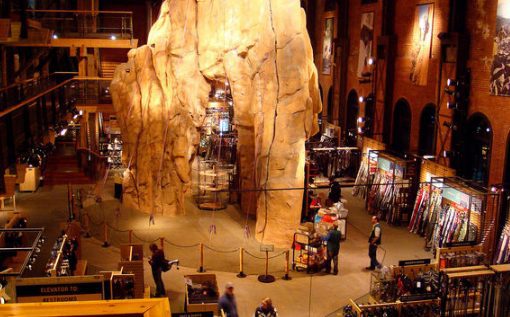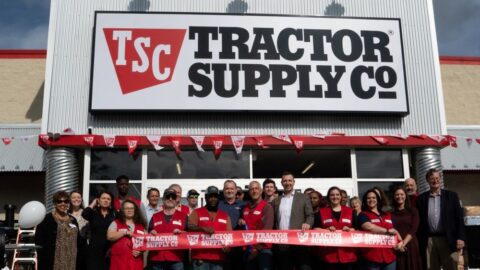As consumers purchase more goods online, traditional retailers are struggling with the integration of digital and brick-and-mortar commerce. But 66% of U.S. consumers still say it’s important to feel and sense a product during their shopping experience, according to Westfield. Many retailers, recognizing the need to offer hands-on, authentic experiences that will draw shoppers into their stores, are adapting their store formats to do so. Experiential retail gives shoppers an enhanced opportunity to touch, feel and/or taste items before committing to a purchase.
But before taking this plunge, retailers should understand the five elements of successful experiential retail programs.
-
Educating and empowering consumers;
-
Providing sampling and showrooming capabilities;
-
Adopting technologies such as augmented reality (AR) and virtual reality (VR);
-
Turning stores into entertainment destinations; and
-
Building communities that engage via social media.
Forward-thinking brands are embracing Experiential Retail. This report highlights examples from four retail leaders: The Home Depot, Sephora, Restoration Hardware and REI.
Context Is Key To Experiential Retail
Retailers looking to capture the benefits of Experiential Retail first must understand that context is key to any experience that delivers value. Most retailers cluster at opposite ends of a spectrum, noted Brian Kilcourse, Managing Partner at RSR Research & Senior Partner of BEK Consulting. Mass merchants that fulfill basic needs, are very product-oriented and compete on price and convenience are at one end of this spectrum, so they may not have as great an urgency to create experiences. But retailers that cater to self-esteem or enjoyment-related offerings — and this encompasses apparel, furniture, jewelry, electronics, etc. — often must provide an experience to the shopper, he noted.
“Ultimately, retailers have to move towards curation,” Kilcourse said in an interview with Retail TouchPoints. “Even if it’s not curated all the way to a 1-to-1 basis, it sure should feel that way. The technology presentation is different, the product presentation is different, the employee experience is different, and the stores are different. Broadly speaking, I always encourage retailers to think about where they fit along that continuum. Where are they on that graph, and which direction are they trying to head in?”
In today’s world of instant information, retailers need to address the experiential concept head-on and start promoting their approach, according to Rick Amari, the Founder of Columbus Consulting.
“There is a big part of marketing and being out in front and saying, this is who you’re going to be,” Amari said in an interview with Retail TouchPoints. “You’re going to try things; you’re going to do things differently. You’re going to adopt the things that work, you’re going to adjust the things that don’t and you’re going to abandon the things that are failures…but you’re going to do it.”
Educate And Empower The Audience: Home Depot Offers DIY Workshops
Retailers must be proactive in marketing and advertising their experiential initiatives, but they also must continue to build brand awareness once they draw consumers into the experience. This process isn’t always about the sale or the product itself. Retailers can offer events such as classes and workshops to generate more store traffic with the goal of creating loyal consumers for the long term.
“This is really about theater, and it always has been,” said Ken Morris, Principal at Boston Retail Partners. “It’s what you don’t get online. Interactive, hands-on events are a great way to emotionally engage with the customer. Free events, and even paid events, can provide some value and brand loyalty and create brand enthusiasts that will feel obliged to make purchases.”
While The Home Depot hasn’t had issues driving consumers into the store, the retailer is still going the extra mile to educate shoppers by offering DIY workshops. Home Depot also has specific “Do-It-Herself” workshops that mix demos and hands-on learning to help women tackle a variety of home improvement projects, as well as kids’ workshops for future DIYers.
“Home décor is an area that people want to learn more about, especially as television channels like HGTV and DIY network gain popularity,” Amari noted. “People want to learn and do stuff themselves, so there is that service side of retail that can help drive traffic and sales. I can’t imagine they make a lot of money on those sessions, but it probably leads to more people buying other merchandise.”
Try Before You Buy: Best Buy, Sephora Provide Unique In-Store Services
One of the biggest attractions of in-store shopping is being able to try on, or try out, a product. There is a certain allure to a home electronics store that sets up rooms where consumers can listen to stereo systems or watch high-def TVs, or a sporting goods store where consumers can test out equipment before they make a purchase.
Best Buy’s in-store IoT services and Sephora’s beauty studios both showcase how a consumer can enter a store and see first-hand how effective the products are. In the case of both makeup and IoT devices, it’s easy to imagine consumers being unsatisfied if they don’t have complete familiarity with the products prior to a purchase.
On a grander scale, Restoration Hardware is offering design-oriented showrooms where shoppers can see how products will look in the home and meet with designers. The Design Galleries currently are located in markets such as Boston, New York, Chicago and Atlanta.
“They’ve created showrooms where you don’t really buy product,” Morris said. “You see the rooms set up, you meet with designers, go in with your own blueprint and they help you understand and furnish a room. They understand that people are showrooming, they’re webrooming and they’re catalog-rooming. After my wife and I got home from a trip there, we looked at the catalog, called customer service and literally ordered $10,000 worth of merchandise that was custom fit. They had walked us through the measurements of this room, and when it arrived it fit perfectly in the room.”
AR, VR Technologies Reshape Retail Reality: Sephora Creates Virtual Artist App
By incorporating the latest technologies into the shopping experience, retailers are getting a big bang for their buck. Experiential retail “is entirely driven, not partially driven, by information and technology,” said Kilcourse. “Information is now considered by retailers to be a strategic asset. Shopping has become a 24/7 activity. The locus for the retail experience is no longer necessarily the store; it’s wherever the consumer is. For fashion, it’s not the dressing room, it’s the living room. All of that is driven by technology.”
Augmented reality and virtual reality are arguably two of the most future-focused technologies available, in that they engage shoppers while expanding the visual experience. A furniture store can leverage goggles to showcase how a sofa would fit and appear within a living room, or a grocery can use a mobile app to provide additional information about a product that a shopper scans.
Sephora has attempted to bridge the in-store and online experiences, teaming with augmented reality platform ModiFace to develop its “Sephora Virtual Artist” mobile application. The application operates through Facebook Messenger, allowing shoppers to upload a photo of themselves to the virtual chatbot. After directing customers to a compatible shade of makeup, the chatbot then suggests products in the brand’s inventory that they might want to purchase. When the shopper enters the store to pick out a specific makeup or shade, they won’t have to deliberate further on their purchase.
Morris also suggested that retailers focus more on a “create your own product” mentality, highlighting Nike as a brand that allows consumers to customize products extensively. “You could choose all of the colors and customize the shoe exactly the way you wanted it, as long as you left enough time for them to make it,” he said.
What’s An Experience Without Some Fun? Bass Pro Shops & Bauer Get Active
Technology continues to change how retailers present the shopping experience through all channels, but brands also have sought to jazz up the store environment with new destinations that provide entertainment for shoppers.
Bass Pro Shops has gone so far as to implement a bowling alley within one store. Bauer Hockey built out two “Own The Moment” store experiences that include a hockey rink in the middle of the stores where shoppers can skate with the equipment they’re trying on. The Bauer Hockey experience features Personal Fit Experts to customize shopper gear based on skill level and style of play, and it generates a 90-minute average dwell time.
Gamification is another entertainment option designed to make shopping fun, but it appears many brands haven’t yet effectively utilized it in ways that enhance the consumer experience.
“I still, to this day, don’t understand why stores don’t offer competitive shopping behavior,” said Bryan Gildenberg, Chief Knowledge Officer of Kantar Retail. “If you want to get more men shopping, retailers should have a fantasy shopping league where guys can compete with each other to see how much money they save.”
Communities Drive Social Experiences: REI Embraces Social Outreach
As fun as shopping experiences can be, retailers also can add value to their experiences by encouraging shoppers to share their feelings with friends, family members and acquaintances. REI leverages social media to encourage its “Co-op Community” to share photos and videos of their outdoor activities, and continues to serve as a positive influence for shoppers due to its ongoing engagement.
“REI has the advantage of being a club, but they’re all about serious outdoor recreationalists,” noted Kilcourse. “Their web sites, their mobile offering and their stores are synchronous in very straightforward ways. For example, on the web site, you can share your experiences with them. And in the act of doing that — showing pictures of your mountain biking trek down in the Andes in South America — you’re telling them a lot about yourself, and they use that information to start directing product toward you that you might be interested in.”
The retailer’s #OptOutside campaign, which has taken place on Black Friday in 2015 and 2016, showed how a retailer could strengthen its brand through a strictly social campaign. When creating successful social campaigns, retailers should convey a sense of authenticity to truly resonate with consumers. Additionally, the product and brand both must be visually appealing.
“If I were a retailer today, I’d benchmark Pinterest,” Gildenberg stated. “Pinterest is the best site I’ve ever seen for presenting a consumer with stuff that they might not have known about, but that they are probably interested in, in a way which is emotionally engaging for them.”
Experiential retail will remain a work in progress for retailers aiming to improve the struggling areas of their businesses, but these steps are a necessity as consumers find more reasons to shop online. There is a clear blueprint showing where retailers need to start particularly if their offerings are not fully commoditized. It requires a heavy dose of education, a focus on product sampling, interactive technology, a sense of fun and a continuing focus on building communities.













